Dead Like Me to Hannibal: The Bryan Fuller Fantasy
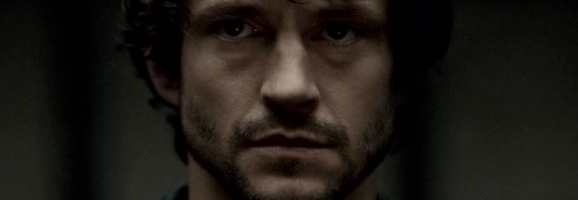
As news of Hannibal’s renewal for a second season was released and the critically acclaimed, but low rating, adaptation went on to complete its ambitious first season, mounting fan campaigns were brought to a halt and the series’ ever increasing body of analysis was allowed to continue uninterrupted. In the short time that it’s been on air, Hannibal has carved out for itself a place in television that is wholly separate and unlike anything else airing at the moment. Finding its beginnings as what appeared to be merely a unique crime procedural meant to cash in on the Hannibal Lecter name, the series has since revealed itself to not only be a worthy adaptation of Thomas Harris’ original novels, but also a dark and complex series in its own right that takes the recent popularity of horror television and raises it to new, operatic heights. From the cast’s stunning performances to its lovingly crafted scenes of decay, Hannibal’s descent into psychological darkness and merciless, but awe-inspiring, violence attests to the steady hand and practised eye for cinematic aesthetic that lies at the head of its production. While it’s certainly a major departure from the light-hearted ghoulishness of its showrunner’s past contributions, Hannibal’s sophisticated design and thoughtful progression represent a near perfection of techniques that have defined Bryan Fuller as a writer right from the beginning.
Starting out as a contributing writer for Star Trek: Deep Space Nine, Star Trek: Voyager, and Heroes, Bryan Fuller developed a modest name for himself early on as an unabashed lover of all things science fiction and horror. Having begun his television career with the specific intent of becoming a Star Trek writer, his appreciation for genre writing and acute understanding of fictional realms is what lead him to create many short-lived, but well received, series over the course of his career. Defined primarily by their otherworldly narrative qualities, vibrant colour palettes, and tireless exploration of ingroups and outgroups, what has come to be fondly known as the “Fullerverse” embodies a collection of versatile writing that finds its strength in genre subversion and metaphor. Where in Hannibal, we see human flesh reconstructed into angel wings and the spiralling effects of Will Graham’s psychosis brought to life through horrifying visions of stag men, the Fullerverse is similarly no stranger to tales involving unusual deaths, bizarre visions, or seemingly innocent pie makers who wake the dead. Although his series’ are sometimes criticised for being too whimsical or outlandish for the average television viewer to enjoy, Hannibal’s recent success demonstrates that the initial simplicity and fairytale like qualities of the Fullerverse often serve a much larger, thematic purpose that causes them to stand out from similar television entries.
The facts were these…
His 2003 debut, Dead Like Me, became the starting point from which Fuller would create the whole of his self-contained universe. It managed to run for two seasons, but was only overseen by Fuller for the first few episodes due to disagreements with Showtime that resulted in his directorial exit. Subsequently, while the series maintains much of the wry humour and innate preoccupations with life and death that easily bind it to the rest of the ‘verse and preserve its quality, Fuller’s early exit has also transformed it into one of his more subdued offerings, both visually and subtextually. Nevertheless, a look at the series early episodes and first season development still reveal a great deal of themes and practices that would prove to be reoccurring as the Fullerverse continued to expand.
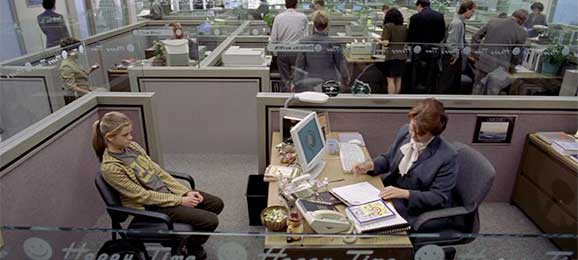
From the series’ pilot, we follow recent college drop-out, Georgia “George” Lass, as she is forced by her exasperated parents to seek work at a temp agency, given a low-level job in a nearby office building, and suddenly killed by a rogue, flaming toilet seat that separates from the de-orbiting Mir space station on her first day. Despite the series’ low budget, the first fifteen minutes spent with George while she’s alive offers a rich and comprehensive look into who she was pre-death. We’re first introduced to a dreary, monotonous world of neutral colours and bustling individuals who carry the same weary expression as George, herself. The endless rows of white cubicles and overflowing filing cabinets that she encounters at work mirror the lines of identical suburban houses that pave the way to her home. The members of her family, who we first meet during a heated argument over the dinner table, are so detached from one another that George’s little sister initially appears to us as nothing more than a floating pair of eye glasses. Following a drawn out pause in which the series patiently forgoes explanation, George dutifully clarifies: “she’s not really invisible. But, as far as I’m concerned, she may as well be.” Through our narrator and guide, we are made to see a world that has grown wholly disillusioned with life and its patterns. Furthermore, we’re allowed to see the beginnings of a world that isn’t afraid to illustrate these characteristics through unconventional means.
From these opening scenes, the pilot comes to serve as a point of comparison from which the series can grow and comment. Following her untimely demise, George finds herself enlisted into the ranks of the undead as a newly minted grim reaper. It’s her job to ensure the safe delivery of the souls who are assigned to her. This is done through a practice in which the reapers are provided new bodies to inhabit that bare only the vaguest resemblance to their old, living ones. She can interact with the living, and it’s soon made apparent that she’s expected to clothe and provide herself with shelter, but she is forbidden from fully assimilating with them. As Rube, the eldest reaper within her assigned cohort, explains: “We’re facilitators, not participants.” While George is allowed to continue existing and to “live” amongst others on earth, she cannot form relationships, communicate with her family, or experience any of those “firsts” that usually play a role in coming of age.
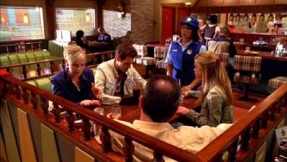 Yet, despite these strict guidelines, the series and characters begin to visibly take on new forms of life that do not befit mere facilitators. While there remain plenty of characters on the peripheral who continue to exhibit the series’ ingrained world-weariness, setting and clothing steadily grow brighter as George also begins to display a sense of curiosity that is completely at odds with our initial impressions of her. Earlier assertions that “interest begets expectation, and expectation begets disappointment, so the key to avoiding disappointment is to avoid interest” fade into the background and are replaced with an endless stream of questions dealing with the afterlife. In one episode, aptly named Curious George, she quizzes a fellow reaper while attempting to dislodge a dead, but still soul infused, parachutist from a tree: “Can you take trees’ souls? Do trees have souls?” As George begins to acquire a deeper understanding of the afterlife, through glimpses of where her delivered souls go, and of gremlin-like creatures that feel strangely familiar to her, her post-death experiences come to reveal greater truths about life than she ever learned while among the living. Although she’s forced to acknowledge that she’ll never be able to return to her normal life, reconcile with her parents, or take up opportunities that she was once so quick to say no to, she also makes friends and comes to appreciate the things given to her during her eighteen years of life. The circumstances are less than ideal but, through each subsequent episode, we see that George’s growing up process really isn’t all that different from our own.
Yet, despite these strict guidelines, the series and characters begin to visibly take on new forms of life that do not befit mere facilitators. While there remain plenty of characters on the peripheral who continue to exhibit the series’ ingrained world-weariness, setting and clothing steadily grow brighter as George also begins to display a sense of curiosity that is completely at odds with our initial impressions of her. Earlier assertions that “interest begets expectation, and expectation begets disappointment, so the key to avoiding disappointment is to avoid interest” fade into the background and are replaced with an endless stream of questions dealing with the afterlife. In one episode, aptly named Curious George, she quizzes a fellow reaper while attempting to dislodge a dead, but still soul infused, parachutist from a tree: “Can you take trees’ souls? Do trees have souls?” As George begins to acquire a deeper understanding of the afterlife, through glimpses of where her delivered souls go, and of gremlin-like creatures that feel strangely familiar to her, her post-death experiences come to reveal greater truths about life than she ever learned while among the living. Although she’s forced to acknowledge that she’ll never be able to return to her normal life, reconcile with her parents, or take up opportunities that she was once so quick to say no to, she also makes friends and comes to appreciate the things given to her during her eighteen years of life. The circumstances are less than ideal but, through each subsequent episode, we see that George’s growing up process really isn’t all that different from our own.
Despite a strong variance in tone and atmosphere, the contrast of fantastical beauty and hard-hitting reality put forth in Dead Like Me carries forward into many of the series that make up the Fullerverse. With greater control and a bigger budget, however, Bryan Fuller’s affinity for magical realism and exaggerated visuals would only start to build towards its full potential with his 2004 series, Wonderfalls. Co-created by Todd Holland (Malcolm in the Middle) and with Tim Minear (Buffy, Firefly) contributing his efforts, another mainstay of the Fullerverse is revealed early on as we’re introduced to this series’ sarcastic heroine, Jaye Tyler, played by the lovely Caroline Dhavernas. As a 24 year old philosophy graduate from Brown University, Jaye is well aware of her wasted potential. Living out of the ‘High & Dry Trailer Park’ and employed as a sales clerk at the Wonder Falls Gift Emporium, Jaye has chosen a path that vastly differs from her highly successful and affluent family. The stress of being a non-achiever, her family says, leads her to experience a “psychotic break” that involves her fainting at work and, unbeknownst to them, developing a sudden ability to communicate with the souvenir junk which her store sells. Even after she’s sent home with a clean bill of physical health, Jaye finds herself hounded by a variety of inanimate objects who see it fit to endlessly sing at her throughout the night, and harass her in public during the day. Unless she chooses to heed their cryptic messages and unwarranted pieces of advice, the objects grow increasingly harder to ignore and her attempts to prove to her family that she’s still sane become drowned out. Thankfully, it soon becomes clear that these voices are largely benevolent.
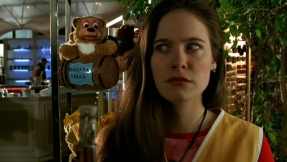 Wonderfalls presents a bright, cheerful world that’s filled to the brim with tourists and travellers who directly oppose Dead Like Me’s stationary setting. As death is nowhere near the menu this time around, the style is decidedly more colourful and even cartoonish in its conception of characters and their interactions. The talking objects, for example, often take on feigned, non-specific accents that are humorous to listen to when paired with their exaggerated expressions and undaunted determination to gain Jaye’s attention. The series’ decidedly quirky set up and large, talented cast also allows plenty of room for Fuller to play with cinematography and special effects in a way that was not possible before. Using the world’s cartoonish styling to lovingly riff off common genres and tropes, we end up with episodes such as Crime Dog, which is shot largely in a film noir style, and Cocktail Bunny, which plays off the typical thriller for comedic effect. Even when simply transitioning between scenes, the series does so by replicating the look of an old ViewMaster. Jaye’s family and the supporting cast are in no way exempt from the series’ distortions of reality, either. On the surface, each character appears to be nothing more than a mere caricature that serves to underline the bizarre and vibrant nature of Jaye’s life. This includes her staunchly republican father, her critical and overbearing mother, and her closeted lesbian, republican sister, who’s constantly fighting off male suitors suggested by her oblivious mother. The characters and situations are drawn in such a wacky manner that their behaviour makes Jaye’s antics appear almost normal.
Wonderfalls presents a bright, cheerful world that’s filled to the brim with tourists and travellers who directly oppose Dead Like Me’s stationary setting. As death is nowhere near the menu this time around, the style is decidedly more colourful and even cartoonish in its conception of characters and their interactions. The talking objects, for example, often take on feigned, non-specific accents that are humorous to listen to when paired with their exaggerated expressions and undaunted determination to gain Jaye’s attention. The series’ decidedly quirky set up and large, talented cast also allows plenty of room for Fuller to play with cinematography and special effects in a way that was not possible before. Using the world’s cartoonish styling to lovingly riff off common genres and tropes, we end up with episodes such as Crime Dog, which is shot largely in a film noir style, and Cocktail Bunny, which plays off the typical thriller for comedic effect. Even when simply transitioning between scenes, the series does so by replicating the look of an old ViewMaster. Jaye’s family and the supporting cast are in no way exempt from the series’ distortions of reality, either. On the surface, each character appears to be nothing more than a mere caricature that serves to underline the bizarre and vibrant nature of Jaye’s life. This includes her staunchly republican father, her critical and overbearing mother, and her closeted lesbian, republican sister, who’s constantly fighting off male suitors suggested by her oblivious mother. The characters and situations are drawn in such a wacky manner that their behaviour makes Jaye’s antics appear almost normal.

Just as Dead Like Me’s style changes over time to reflect the growth of George, Wonderfalls similarly draws inspiration from its visuals to highlight the changes undergone by Jaye and her family. In the midst of watching these characters experience ridiculous scenarios involving cow creamers and mini personal epiphanies, the realities of Jaye’s situation are consistently brought into sharp contrast. Through the ups and downs of each episode, Jaye repeatedly questions whether she has really lost her mind or if any of the things occurring around her could possibly be real. At one point she asks one of the objects straight out, “Are you satan? Are you god?” After receiving no response and continuing the one-sided conversation for a while longer, she comes to accept her assumed fate: “Oh god, I’m a crazy person.” While in interviews, Bryan Fuller often refers to Wonderfalls as a sort of Joan of Arc tale, he also admits that the series could be read as being about a woman dealing with mental illness. The series never veers into such serious territory and the nature of the voices is, ultimately, left ambiguous. Nevertheless, the fact that Jaye does face many personal issues in her otherwise unconventional life cannot be completely ignored, and the series deliberately goes out of its way to ensure that they’re not.
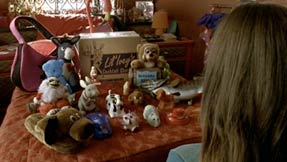 Despite her privileged beginnings and completion of a highly credited university program, like George, Jaye is initially presented as a deliberate underachiever who has not given up on life, but has found herself at a standstill. She’s surly, withdrawn, and often has a sarcastic quip or two on the tip of her tongue. While, over time, we increasingly begin to see some sort of initiative under her rough exterior, she’s just as often plagued by self-doubt and uncertainty over what to do with her life.
Despite her privileged beginnings and completion of a highly credited university program, like George, Jaye is initially presented as a deliberate underachiever who has not given up on life, but has found herself at a standstill. She’s surly, withdrawn, and often has a sarcastic quip or two on the tip of her tongue. While, over time, we increasingly begin to see some sort of initiative under her rough exterior, she’s just as often plagued by self-doubt and uncertainty over what to do with her life.
In one episode, a young reporter researching a zeitgeist piece on “Gen Y losers” stalks Jaye, informing her that “You represent a generation of young people who’ve been blessed with education and opportunity who don’t just fall through the cracks but jump through.” Horrified at the accusation, Jaye protests, “I’m not a crack jumper!” Jaye, like many others, has been weighed down by the high expectations set by her parents, siblings, and society at large. Although she might not fully realize it, she consequently maintains a strong sense of detachment that even the random acts of kindness that the surrounding inanimate objects encourage her to perform initially have trouble breaking her out of. Even while she’s trying to return a stolen purse to an obnoxious customer or befriend someone who she would rather not know, Jaye displays a strong need to avoid and repress difficult situations in the hopes that they’ll simply go away. But now the rules have changed. When she ignores something, it no longer goes away. Rather, Jaye’s attempts to gain control over her own life and find her purpose within it are shown to be fairly futile. Her love interest, Eric, at one time points out: “Why struggle with fate? Life can be sorta peaceful when you stop struggling.” Unsure how to respond, Jaye simply retorts, “It’s a lot like drowning in that way.” While Wonderfalls is ultimately a comedy at heart, the undercurrent of emotional issues and commentary on how a person like Jaye falls behind in life emphasises the ways Fuller incorporates his love of fantasy into telling tales that directly reflect its audience as well as the inherent freedom of television as a story telling medium.
From these modest beginnings, the Fullerverse has since grown astonishingly steadfast in its development. While his first two series failed to garner the ratings needed to stay afloat, a growing fan following and steady stream of positive reviews have since imparted Bryan Fuller’s name with more resonance in the television world than previously achieved. With a greater number of resources and talent at his disposal, it’s no surprise that his two most recent, major contributions have the most in common despite vastly different approaches in genre, style and focus. Once Wonderfalls was taken off the air, it wasn’t until 2007 that Fuller finally made a comeback with what was, prior to Hannibal, his most celebrated and award-winning series. Described as a forensic fairy tale, and existing in a unique world with its own well defined sense of nostalgic logic, Pushing Daisies carries the very obvious fingerprints of early Fuller shows. The colours are bright, the music is bouncy, the passage of time is denoted by bookshelves being filled, and the destructive play of children is re-imagined as a sequence of claymation. All the while, audio book legend, Jim Dale, narrates the proceedings and settles in audience members for what is essentially a children’s story book brought to life.
Having been compared to the likes of Tim Burton’s Big Fish, the works of Road Dahl, David Lynch’s Twin Peaks, and most notably, Jean-Pierre Jeunet’s Amelie, Pushing Daisies effectively captures the feature film aesthetic and larger than life tone put forth by each of these examples, as demonstrated in this brief summary (spoiler free outside of a bit of a reveal from the end of season one, which you can avoid by pausing the clip at the 4:05 mark):
From its opening sequence, the series boasts an overtly idealistic and romanticized tone that’s proven to be very divisive among viewers. While some were, understandably, turned off by the series’ unrealistic and cutesy presentation, those who stuck by were treated to a series with a surprisingly great degree of self-awareness. Much like a typical fairy tale, there’s a fated couple torn apart, a young girl who is locked away from the world by her two, potentially evil, aunts, and an abandoned young hero who must learn the ways of his newly discovered abilities. The reunion of Ned and Chuck, with its pronounced Sleeping Beauty undertones, reinforces the romantic youthfulness and fanciful approach that carry the series through its two seasons. Whereas, in reality, feelings change and people move on from who they were as children, our two main characters remain suspended in feelings and life expectations that had inspired them in their youth, despite now being well into their adult lives. While this would certainly be a problem in the real world, as Emerson is quick to point out with his comment that “it’s just so shockingly stupid,” in a world that includes a honey-based cosmetics company with an office building that resembles a beehive, and a murdered mime who insists on telling his story through hand gestures until Emerson puts a gun to his head, the series invites its viewers to initially push aside their inbred cynicisms and openly accept the reality being presented to them.
Yet, as Ned and Chuck reacquaint themselves with one another and face increasingly difficult cases, the seemingly innocent and splendid world that they inhabit begins to reveal just how far from reality fairy tales really are. The narrator, for one, is never shy about pointing out the darker natures that lie within many of the characters. There’s also the fact that, while this is a world of fantastical happenings and reunited sweethearts, bills still need to be paid and characters like Emerson hold no qualms over using Ned’s miraculous abilities to pay for life’s necessities. Towards the latter half of the first season and the beginning of the second, the show begins to pull back the fairy tale setting and explore aspects of the characters’ relationships that are firmly planted in the real world. When looking towards our lead, for instance, we find that due to early life experiences following the death of his mother, abandonment by his father, and a mostly friendless childhood, Ned has grown to be incredibly passive, and even fearful, of the world around him. He’s so frightened by the implications and consequences of his abilities that, often times, he must rely on his more assertive partners to bring him away from his pies. Amplifying his social discomfort is the fact that Ned’s actor, Lee Pace, stands at a tall six-foot-three but portrays Ned as consistently hunched over, making him appear much smaller and more visibly withdrawn than his stature would otherwise suggest. Unfortunately, the increased outings and relationships that he forms near the beginning of the series leads to countless moments of over-protectiveness, particularly when it comes to Chuck.
On the opposite end of things, Chuck’s incidental isolation from an early age has given her a thirst for adventure that has not been tempered by her own premature death. Rather, she often insists that she join in on investigations, be allowed to interact with people outside of the Pie Hole, and have some assurance that her aunts are continuing on fine without her. Even when Ned oversteps and tries to hide her away out of fear that she’ll be discovered in her very much not-dead state, Chuck is not shy about standing up and voicing her own thoughts and desires. Although the series initially presents them as an ideal, like any normal relationship, they’re shown to have flaws that force them to learn to co-operate, compromise, and communicate in order to make the relationship work. There’s none of the old turns of jealousy or dragged out misunderstandings that continue to plague many television couples on a weekly basis. Instead, we get Chuck moving into her own apartment and the two pretending that they’re meeting for the first time, or Ned recreating Chuck’s beloved bee colony on the roof of his shop so she doesn’t have to feel so homesick for the ones she left behind. It’s a relationship that flourishes as she gains autonomy and they move away from the pre-determined fairy tale set up.
With many of the other characters falling into a similar step, Pushing Daisies‘ dynamic balance between fantasy and reality is undoubtedly handled with a degree of care that goes beyond even Fuller’s past works. As a series that recalls the basis of its style and demeanour from Wonderfalls, but also reanimates much the dark humour first touched on in Dead Like Me, many of the themes from each of his earlier shows naturally carry over here as well. The reality of death and loneliness is there, and the series never completely forgets how real these experiences are. But there’s also love, pie, and a sense of camaraderie that serve to brighten the daily cycles of life even when it’s clear that real fairy tales do not exist.
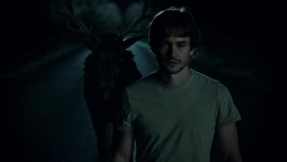 Thus far, I’ve outlined how the thematic structuring and aesthetic leanings of the Fullerverse have changed and developed from one series to the next. As it’s been seen, Bryan Fuller is never one to fall into old habits or overdone tropes carelessly. Rather, he actively learns from his past work and forces himself to evolve drastically over a short period of time. His readiness to adapt and experience writing highly stylized, metaphorical tales dealing with psychology, particularly following the breakthrough that was Pushing Daisies, is what makes him an ideal choice for the adaptation of Thomas Harris’ plot lines. In the same way Thomas Harris transformed the crime thriller genre and introduced horror attributes that went far beyond the traditional male penetrative type of murders that still populate the genre, Hannibal approaches the crime procedural structure by pushing the boundaries on what can be expected from horror television.
Thus far, I’ve outlined how the thematic structuring and aesthetic leanings of the Fullerverse have changed and developed from one series to the next. As it’s been seen, Bryan Fuller is never one to fall into old habits or overdone tropes carelessly. Rather, he actively learns from his past work and forces himself to evolve drastically over a short period of time. His readiness to adapt and experience writing highly stylized, metaphorical tales dealing with psychology, particularly following the breakthrough that was Pushing Daisies, is what makes him an ideal choice for the adaptation of Thomas Harris’ plot lines. In the same way Thomas Harris transformed the crime thriller genre and introduced horror attributes that went far beyond the traditional male penetrative type of murders that still populate the genre, Hannibal approaches the crime procedural structure by pushing the boundaries on what can be expected from horror television.
Working closely with its pre-determined ‘murder of the week’ set up, Hannibal runs the course of what you would expect during its early episodes, albeit with heightened effects and a greater concentration on atmosphere. Will uses his gift to discover the motives of a murderer. Hannibal appears to be merely a highly respected psychiatrist meant to guide and offer counselling to Will should he need it. Murders are neatly solved within the hour. As any viewer will tell you, however, this is not where its true horror lies. During the series’ introduction, Hannibal is only exposed as the main villain in the subtlest of ways. Now, that’s not to say his cannibalistic tendencies aren’t put on display, or that there aren’t some obviously questionable practices committed. But the characterization of Hannibal during this time initially comes off as being quite harmless, all things considered. He’s a practising cannibal, but he doesn’t appear to actually hold any ill-will towards his colleagues, including Will Graham. Subsequently, younger members of the audience who may have never encountered Hannibal Lecter could potentially be won over by his charms. Even older viewers, who most likely grew up with Anthony Hopkins’ portrayal permanently seared to their memories, may find themselves second-guessing the Hannibal presented here. With his villainy immensely underplayed in these early episodes, the series achieves a high level of uncertainty in the audience’s expectation by purposely adopting a Hitchcockian approach to suspense. The audience is shown the dangers that lie on the fringe, but are made to simply wait, with increasing tension, until Fuller is ready to drop the bomb.
Thus, it isn’t until the second half of the season that the story begins to tumble into an all encompassing darkness that proves to be quite shocking. The transition from above average police procedural to a dark, twisted piece of psychological horror proves to be a path filled with hallucinations, morally ambiguous characters, and meditations on good and evil. This, in part, is due to Mads Mikkelsen’s unique approach to the role of Hannibal Lecter. Fuller describes how, during one conversation, Mikkelsen clearly presented how he saw the character being portrayed:
He was talking less about doing this as Anthony Hopkins or Brian Cox and more like Lucifer. He wanted this character to be a fallen angel who had an affinity for humanity and a love for the human condition, but also could be very punitive in a hellish way that opened up the mythology of the character.
Mikkelsen’s approach to Hannibal reinforces the series’ otherworldly qualities and vague divisions between good and evil. In Hannibal, we have a character who is not only the embodiment of evil, but a representation of evil that is highly manipulative and difficult to decipher. His influence over the course of events and other characters is shown to be far reaching and nearly impossible to decline, causing otherwise good characters to second guess their actions and display horrifying behaviour that empowers Hannibal even further. At the forefront of Hannibal’s dealings is Jack Crawford, a strong, pragmatic man who Hannibal subtly encourages to push Will closer to the brink of sanity under the guise that it will ensure that investigations are performed to their fullest extent. A similar blurring of moral lines occurs in Abigail Hobbs, who is brought under Hannibal’s wing and seemingly begins to show little remorse for the fact that she helped lure in girls for her father to kill. There is also Dr. Frederick Chilton, a colleague of Hannibal’s who is responsible for convincing Abel Gideon that he is the Chesapeake Ripper, and Dr. Sutcliffe, the neurologist who needs very little convincing to allow Hannibal to withhold the treatment that Will so desperately needs. Each of these characters, consciously or not, plays into Hannibal’s hand and increasingly reveals Hannibal’s authority over nearly every move made over the course of the season.
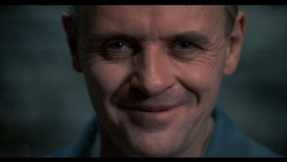 But, as it turns out, they’re not the only ones. As the season goes forth, we soon come to learn that it isn’t just the characters on screen who are being manipulated. The driving force behind Hannibal’s horror is the way in which audiences are aligned with the series’ varying perspectives and even the terror that Will experiences, himself. Through a practice that borrows directly from Jonathan Demme’s 1991 adaptation, The Silence of the Lambs, the audience is made to share Will’s psychological and emotional journey. Like many of the heroes that populate the Fullerverse, Will starts out as a quiet man with a special gift that has caused him to withdraw from those around him. In the series’ pilot, Hannibal goes so far as to comment on Will’s lack of fondness for eye contact, to which Will scoffs, “eyes are distracting. See too much, don’t see enough…” It’s a discomfort that very closely mirrors the strong aversion to eye contact also showcased by Jodie Foster’s Clarice Starling. On close ups, Clarice is often seen breaking eye contact with whoever is being spoken to. Yet, when the camera turns around and provides a close up shot of the other person, we see them looking directly into the camera with unwavering attention. The blocking of these shots serves to highlight the fact that most of the film is shot from Clarice’s perspective and the way others struggle to connect with her personally. However, it also becomes a powerful tool whenever Clarice converses with Hopkins’ Hannibal and the audience is forced to gaze directly into his eyes as he describes how he once prepared a census taker. It creates an intimate situation in which Hannibal isn’t merely talking to just Clarice, but directly to the audience as well.
But, as it turns out, they’re not the only ones. As the season goes forth, we soon come to learn that it isn’t just the characters on screen who are being manipulated. The driving force behind Hannibal’s horror is the way in which audiences are aligned with the series’ varying perspectives and even the terror that Will experiences, himself. Through a practice that borrows directly from Jonathan Demme’s 1991 adaptation, The Silence of the Lambs, the audience is made to share Will’s psychological and emotional journey. Like many of the heroes that populate the Fullerverse, Will starts out as a quiet man with a special gift that has caused him to withdraw from those around him. In the series’ pilot, Hannibal goes so far as to comment on Will’s lack of fondness for eye contact, to which Will scoffs, “eyes are distracting. See too much, don’t see enough…” It’s a discomfort that very closely mirrors the strong aversion to eye contact also showcased by Jodie Foster’s Clarice Starling. On close ups, Clarice is often seen breaking eye contact with whoever is being spoken to. Yet, when the camera turns around and provides a close up shot of the other person, we see them looking directly into the camera with unwavering attention. The blocking of these shots serves to highlight the fact that most of the film is shot from Clarice’s perspective and the way others struggle to connect with her personally. However, it also becomes a powerful tool whenever Clarice converses with Hopkins’ Hannibal and the audience is forced to gaze directly into his eyes as he describes how he once prepared a census taker. It creates an intimate situation in which Hannibal isn’t merely talking to just Clarice, but directly to the audience as well.
Similarly, as Will becomes more intricately drawn under Hannibal’s influence, the series’ aesthetic contorts in ways that specifically come to signify Will’s descent into madness. Every gruesome murder and elegant piece of set design exists to reinforce Will’s growing instability and bring the audience under his perspective. While not as obvious as in Silence of the Lambs, the cinematography, also, adopts the practices displayed by Jonathan Demme to instil in the audience the same unease felt by Will whenever Hannibal is nearby. On the few occasions we’re allowed to meet Hannibal’s gaze head on, it acts as a reminder of how dangerously powerful Hannibal is. He’s capable of twisting the thoughts of characters and viewers alike, even to the point where, when Will realizes a fact that we know to be true, we are also capable of understanding just how off-kilter and paranoid he sounds.
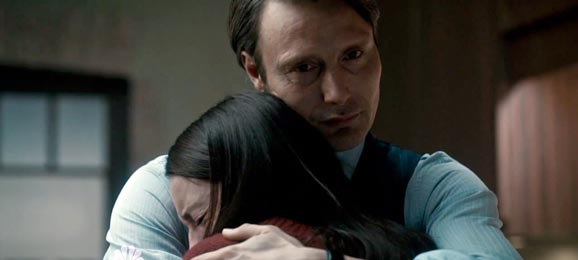
Like the series that came before it, Hannibal walks a fine line in maintaining its blatant separation from reality, while also teasing at the genuine psychological elements that affect characters and viewers, alike. In his reimagining of Thomas Harris’ tale, Fuller has produced a villain that exists wholly beyond the boundaries of fiction and reality. Appearing to us in a form that seemingly belongs more to the literary or cinematic tradition than television, the villainy of Hannibal sets itself apart by extracting the very real fears of its onlookers and translating them into an operatic piece of horror that feeds off audience expectations and subverts common tropes of murdering madmen to produce crimes that are unlike any other. However, as we have seen with each of Fuller’s other works, Hannibal’s brilliance doesn’t simply end there.
In an interview with Empire, Fuller explains that even if “you’re looking at something that’s quite disturbing and terrible…if you have the ability to make it beautiful, you should make it beautiful.” This is a philosophy that seamlessly works itself into both the visual creation and thematic development of many of Fuller’s works. In uncovering the deep-seated fears and uncertainties that so often accompany daily life, as the Fullerverse is keen to do, there exists a strong affection for characters who lack direction, experience social discomfort, and who find themselves particularly vulnerable to the inconsistent flow of life. Such characteristics act as the centrepiece to Dead Like Me, Wonderfalls, and Pushing Daisies. But, a closer inspection shows that similar themes work their way into Hannibal, as well. Many are easily molded by Hannibal’s whims and there are those who appear to actively seek out his approval. However, there are also those who actively resist and confront Hannibal’s influence, such as Alana, who embodies compassion, self-aware rationality, and the will to stand by her convictions. There’s the forensics team, particularly Beverley Katz, who repeatedly attempts to reach out to Will and only comes to believe Hannibal when there’s physical evidence to prove his claims. Finally, there’s Will himself, who ultimately undergoes an exciting transformation that promises an intriguing follow up to this season’s finale.
Each of these characters are representative of the Fullerverse’s ongoing celebration of beauty and its intrinsic attachment to feelings of dismay. Although Will is forced to endure horrendous events at every turn, the world he exists in is not entirely gruesome. There are honest and compassionate individuals willing to stand by him even in a series that is so totally blanketed in moral darkness. In intertwining beautiful visuals with often charming, sometimes astonishing, supernatural elements, Fuller commands an ever expanding universe that knows no bounds in its exploration of strange gifts and larger than life personalities. But he also delivers compelling characters and story lines that are constantly seeking out ways to break the boundaries of their realities and transcend the predicaments placed upon them, thus uncovering the gaps that exist between fantasy and reality while also illustrating how the two sometimes overlap.
The Bryan Fuller Fantasy that I speak of in my title is a classification that I feel exemplifies the unique outlook and refinement of skills that Bryan Fuller consistently lends to his imaginings. In writing this article, I have only touched on the most well known and influential pieces of the Fullerverse. You may recall that it wasn’t too long ago that Fuller released a pilot for the not-to-be Munster reboot, Mockingbird Lane. He has also directed his talents towards a pilot episode that was to be an adaptation of Mike Mignola’s The Amazing Screw-On Head, which I also whole heartedly recommend as it’s simply fantastic. As we speak, he’s putting together a project for Syfy known as High Moon, which is said to explore the events that occur when the countries of Earth establish colonies to mine the moon’s resources, only to discover a new form of life. With his seven season plan for Hannibal well in motion, and assertions that he would love to bring Star Trek back to TV if ever given the opportunity, Bryan Fuller has proven himself to be an under-appreciated, but unstoppable, voice of fiction who will most definitely continue to delight us for several years to come.
What do you think? Leave a comment.
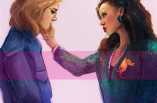
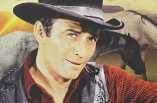
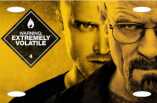




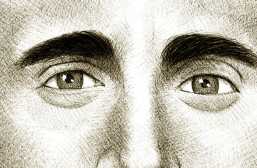

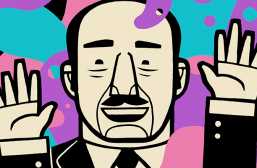
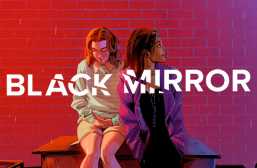
This is one article for the ages. Very intrigued. When I first heard of Hannibal on TV, I hated the premise, prepared to hate the show, failed. Finally we can see the gray that exists between black and white… and it’s mysterious. So it is of course no wonder that such area is explored so well when the explorer is Fuller.
Thank you so much for the comment. I had a similar reaction when I first heard that Hannibal was going into production, especially after watching the flop Mockingbird Lane had. It’s really exciting to see what Fuller is doing with it though. It really feels as though he’s coming into his own.
Wonderfalls, to me, seemed the most tightly written, acted, directed and fully realised. The whole series was like a glimpse of a parallel universe, showing what American TV *could* be.
The main character is a strong, smart young woman (how refreshing!), but all of the characters are wonderful, well written and well acted. It’s a funny show with some seriously hilarious lines, but it never becomes jokey. There is a lot of heart in this one. Jaye is completely believable (to me). I love that she breaks stereotypes, and is a bit nasty. She feels like a real person that I might know.
I loved Dead Like Me, but George was not as believable for me. Also, the replacement of the one character was jarring, and some of the plot choices seemed… not completely thought out. I don’t know. I did really like it, but it felt like too many people were involved. Would be interesting to see what Fuller would have done with the show if he had had full control.
In contrast, Pushing Daisies felt more like one man’s vision. I love the completely created world we enter. It’s so stylized and fantastic, a character in its own right. The stories are intentionally hokey, and that doesn’t bother me at all, because it all fits. The acting is great, the lines are witty, it’s all so nicely done. Too bad we didn’t get more seasons…
I will watch Hannibal next. My hopes are high.
I actually read a lot of similar opinions on George’s characterization while preparing for this article. It’s been a while since I last watched it but I always thought she was pretty well developed and even relatable in some respects. She was much rougher around the edges than Jaye but that had always made her little discoveries and epiphanies more engaging for me. She seemed like your typical, sullen teen who still had so much to learn and would have grown into a mature, well-rounded character had her life not been cut so short. I do agree that the series could have been directed better after Fuller’s exit, though. It had a lot of great ideas and I loved the humour and attention given to George’s family, showing how they each coped with her death and how George had trouble moving on. But some of the choices and character changes were definitely jarring.
Wonderfalls is by far one of my favourite contributions to the Fullerverse exactly for all the reasons you listed. I was blown away by just how good it was when I first watched it. Caroline Dhavernas, in particular, really made that show and I was ecstatic to see her make a return in Hannibal. Fuller had a very fine line to walk in making Wonderfalls because, as you said, it could have become this overly jokey mess so easily. Instead, it’s a show that I would have been very interested to see go on and expand its universe. I feel the same way about Pushing Daisies, as well.
Hannibal has a lot of surprises. I hope you enjoy it!
Congratulations to Bryan Fuller for developing Hannibal and many thanks to NBC for renewing it. I can easily say that Hannibal is better and stronger than the other show in this time slot. Fullerverse is the word of the month.
I’m a writer, actually, trying to get my first book published. And in that limbo of waiting for editors to reply, I had a bit of a writer’s block, didn’t know what I wanted my next book to be about. I had some names, some vague ideas, and that was it. This may sound a bit hackneyed, but Hannibal was one of the things that broke me out of that writer’s block. Not like I’m writing anything remotely similar, but just on a basic inspiration level: watching something that took so much passion and ambition kind’ve provoked the same in me. There’s a fearless poetry to the show, and the characterizations and imagery are so rich and complex, it definitely got my cogs turning as far as what I deem important when it comes to storytelling. Plus, my own imagination being a bit dark, it always helps to see firsthand that that’s perfectly okay, that there is indeed a large group of people who enjoy that tone the way that I do.
I’ve written 250 pages since June for this new novel. So I guess–on an intrinsic level–the imagery, writing, characterization and acting would be my favorite aspects of the show (that’s a bit broad, isn’t it?) because those were the things that inspired me. Cheers to the creators for that, and cheers to the fans for being such an eclectic bunch! That includes you Jessica.
I would like to think that for most of those involved in Hannibal are trying very hard to give the fans a valuable TV watching experience that is more than just a paycheck – I know that is the bottom line always, but it’s equally important to make the best they can, and walk away knowing that for some of us as well as themselves, it was more than they hoped and turned out even better than they knew. Thanks to Bryan, David, Mads, Hugh, Laurence, Caroline et al – don’t know where Season 2 is going, but we’ll be there for another special and awesome ride!
Is it just me or are all of Bryan Fuller’s shows filled with rewatch value?
Very nice post!
You can put me in the train of fuller fans. I have watched Hannibal and Dead like me and both are great. In Hannibal, I love the thought-provoking lines that often have a double-meaning and give some dark insight into what’s really going on with the characters.
Thank you! Hannibal is definitely one of those shows that deserves to be watched more than once. There’s so much going on that can easily be missed the first time through, it’s a lot like reading a novel.
I’ve convinced to watch Pushing Daisies now. Thanks!
I hope you enjoy it! It’s pretty magical.
Great article. I enjoy Fuller’s work. Admittedly I haven’t seen all of Hannibal. I caught a few episodes and thought they were really good, and then kicked myself for not keeping up with the series. (I guess I’ll have to pick up the first season on DVD when it comes out in a couple weeks.) Pushing Daisies is a show I never watched in its initial run but have been desperately trying to find time to watch since. I’m really going to have to get on that soon…..
Thank you! It’ll certainly be an interesting ride if you decide to watch both of those series within the same time frame. They’re both very different but also hold a lot of similarities to one another, surprisingly. I would definitely recommend making them a priority, but I’m obviously biased ahha.
Dead like me was a beautiful and heartbreaking and hilarious show and just excellent. It kills me that there aren’t more episodes, but in a way it’s kind of appropriate that it was taken before its time. I like that there are so many unanswered questions, mysteries, winking hints and sly nods–perfectly fitting for a show about death.
I agree wholeheartedly. Dead Like Me was my second encounter with Fuller’s work so, despite some problems, I still have a huge soft spot for it. The cast was phenomenal and George was someone who I really sympathised with. The series had a lot to say about life and death but also knew when to simply step back and leave its questions unanswered. To put simply, it was a gem.
I started watching Pushing Daisies after reading this. It was cute, but I couldn’t quite decide whether I liked it or not. I thought it was a little silly in some ways. Although it’s really nothing like Psych, it reminded me of that show because I find it silly (and I find Shawn immature to the point that I don’t care for him). Surprisingly enough, I didn’t find the Police Squad shows silly or movies like Zorro the Gay Blade. I will watch the second episode tonight and see what I think. I plan to give it a fair chance.
Pushing Daisies definitely has its silly moments but, if you wait it out, I think you’ll be pleasantly surprised. I rewatched the series while preparing for this article and I was surprised just how twee I found the pilot to be. Once you make it a few more episodes in though, other elements begin to come into play that really help to ground the series and make it memorable. Even if you find that it’s just not for you, I’m happy to hear that you’re giving it a chance.
I appreciate that Bryan Fuller is giving us another POV of Dr. Hannibal Lecter – his pre-incarceration era where he’s more sane and got layers of emotions, intellectuals, ego, alter ego… that’s very interesting.
I used to love Pushing Daisies, and I even would recommend it to people. But after re-watching it, I just sort of lost all interest in it. It didn’t hold up well for me, which I don’t really get. I’ve re-watched many other shows that have since been cancelled and still love them. This makes me a little worried about going back and re-watching other shows I once loved, for fear that I’ll end up hating them as well. Not that I hate Pushing Daisies now, but I became increasingly annoyed with it and found myself not wanting to watch anymore, although I did watch it to the end. It’s a real shame.
Well, first there was the Twilight Zone, then Star Trek, then Mash, Hill Street Blues, St. Elsewhere, Homicide Life On the Street, then The Wire became the yardstick by which I measured all things.
Then came Hannibal, which has sort of rocked me back on my heels. Intelligent, erudite, thoughtful, darkly hilarious, horrifying, gorgeous; like Lecter’s food, each episode is a banquet for the viewer, to the extent that sometimes I imagine I can even smell the food.
I never expected it to be what it is and like you I’m glad I gave it a chance. I was never much of a Harris fan but was intrigued by the notion of a pre-jailed take on Lecter. I was doubtful anyone could fill Hopkins’ shoes but after watching how Mikkelsen absolutely owned the part in the first episode, I was hooked.
I’m happy NBC saw the light on this show, they have such a bad track record on that (Southland, anyone?), I feel sure that they’ll be glad they renewed it.
I find myself continuously amazed by how well Mikkelsen has managed to take on the role of Hannibal Lecter. The show, in part, was really riding on his performance and I appreciate the attention and care that he’s brought to his performance. Hannibal has definitely raised my standards when it comes to television, particularly the horror variety.
Also, thank you for mentioning Mash. I still consider that series a yardstick for measuring quality and I’m always happy to spot another fan.
Wonderfalls is by far his best show, possibly the best show. Besides, he only worked on Dead Like Me for the first half of season 1 and ended up leaving on bad terms after the powers that be kept messing up his story lines. Pushing Daisies is a tad too overproduced and underwritten in my opinion. I still like the show, but it’s a little bit style over substance (or perhaps the substance is muted by the the cartoon sets?). I will have to watch more of Hannibal before I cast my judgement. I hear a season two is on the way.
It was so good I only found out about Pushing Daisies and watched both seasons in a week. I’m really pissed they cancel really good show’s like Terriers, Bored To Death and Pushing Daisies but fkng reality shows get 7 seasons.
Oh, I know that feel. It saddens me that it surprises so many people that a show like Hannibal was renewed, as series like it absolutely deserve it more than any other. I don’t think I’ll ever be completely over Pushing Daisies’ cancellation. We were just starting to learn so much more about Ned’s past and the other characters and it’s always sad when you’re forced to watch a show try to wrap things up quickly. I’ve never heard of Terriers or Bored to Death, but your comment has made me want to look into them.
I love your article. I have been a fan of Bryan Fullers work long before I knew it was Bryan Fuller. He always seems to offer something outside the ordinary. I really appreciate that. This work – Hannibal – is over the top. It’s deep. It makes you think. It engages you. It causes you to discover things about yourself (ssssh – I may have said too much). While network television has launched an aggressive campaign to dumb us all down with mind-numbing garbage, it is so refreshing to finally be challenged. A gem like this – Hannibal – comes along far too infrequently. I find myself watching each episode twice – back to back – just to soak it in, to savour the flavour – so to speak. Congratulations to Bryan Fuller for hitting a grand-slam, congratulations to NBC for serving it to us, and congratulations to you, Jessica, for tying it all together for us.
Thank you so much for your comment! Hannibal is a series that I hope sticks with us for a long time to come. Fuller has always managed to produce such wonderful, stand-out pieces of work and it’s exciting to see him return with a show that combines his talents so well. I’m actually rewatching Hannibal now and I find myself appreciating it even more than I did the first time through. It’s just so rich and unlike anything else that television has so far produced.
And no worries, your secret is safe with me.
I didn’t know much about Fuller’s work but I did watch Dead Like Me in my undergrad and Hannibal more recently and have thoroughly enjoyed both. This was an insightful read – thank you for that.
I don’t comment often on things online but this made my day. Bryan Fuller is great, thanks.
Pushing Daisies…one of the best shows I have ever watched. Great article.
I was definitely afraid to start watching Hannibal at first, not realizing right away that it was a Bryan Fuller project. I was still skittish as far as episode 2 because of how squeamish I can get with that sort of thing (I refuse to watch things like CSI for example) but somehow Fuller always manages to draw people in, and your article nailed how he’s able to do that right on the head!
Alright, I’m convinced. I’m a huge fan of the Harris novels and the amazing character he created in Lecter, and until I read your article I was skeptical about whether or not to watch the series, but your evaluation makes me sure I want to!
Even though I’d seen all of these, I was never quite able to describe why exactly Bryan Fuller was so unique. Your analysis was very helpful, as well as very interesting! It’s easy to see Hannibal as seperate from what he usually does, but it really is a logical progression. I can’t wait to see whatever he does next.
I am a loyal fan of Hannibal, but find myself doubting the (current) second season. The first season was amazing and I have no qualms with declaring it as one of the best seasons of television I have ever watched. But the current season seems rather lackluster with respect to the plot line as well as the features (haunting music, irregular yet appropriate visual symbols, etc) that first drew me in. The show seems to be facing an apparently imminent transition from the original heady psychological macabre to a stereotypical edgy police thriller with a ‘twist’.
A great read about the journey of Fuller. I stumbled into Hannibal after seeing some of the gory murders in trailers, wondering how on earth a show could get away with such twisted, fantastical crime scenes (the extreme technology of some CSI episodes and the like turned me off crime drama for a while), and the psychological twists are incredible. The choppy style of the series had my head spinning for quite a few episodes, but clearly something kept drawing me back…!
While I absolutely love the first three entries of the Fullerverse, Hannibal is just gory shlock pretending to be clever. It has no redeeming features whatsoever.
I was shocked and disappointed in the extreme that Hannibal is a Bryan Fuller creation.
More whimsy, less, “I belong to a generation of TV watchers who are dead inside and have to be smashed in the face with abjectly depressing violence to feel anything” in future please Mr Fuller.
As a huge fan of Dead Like Me (one of my favorite TV shows ever), Pushing Daisies, and Hannibal (though for me it declined halfway through the second season), I commend you on this thorough article.